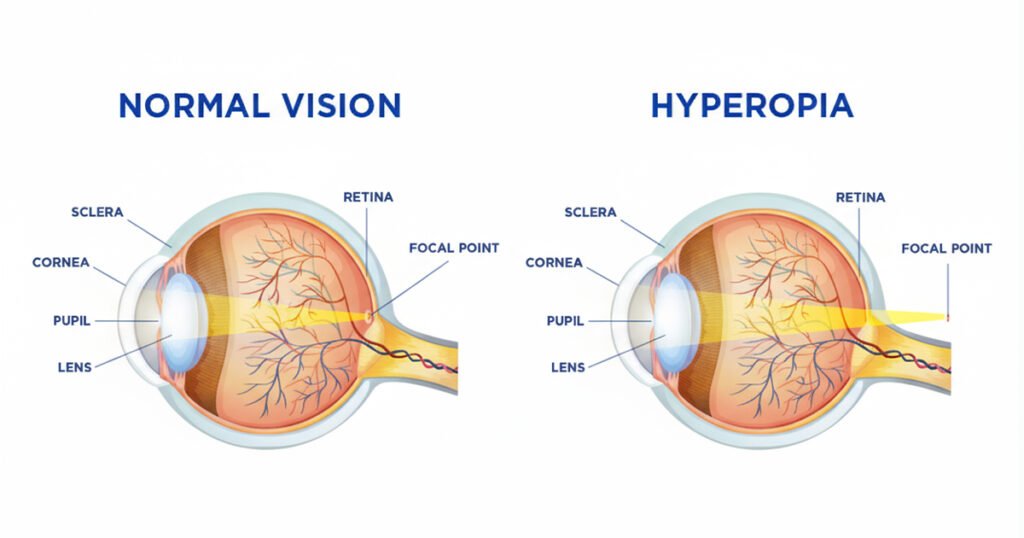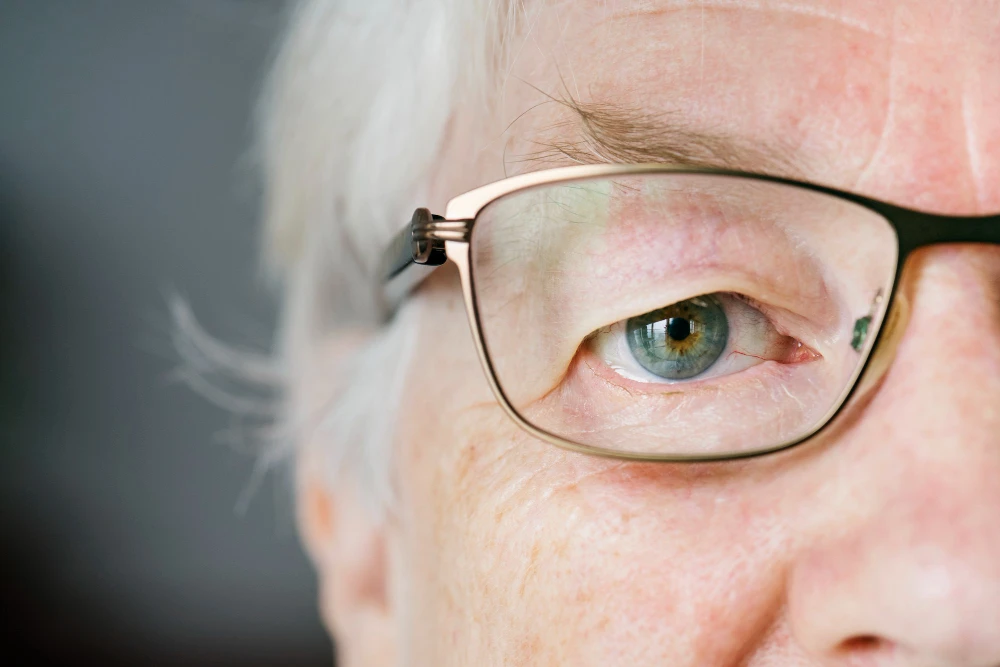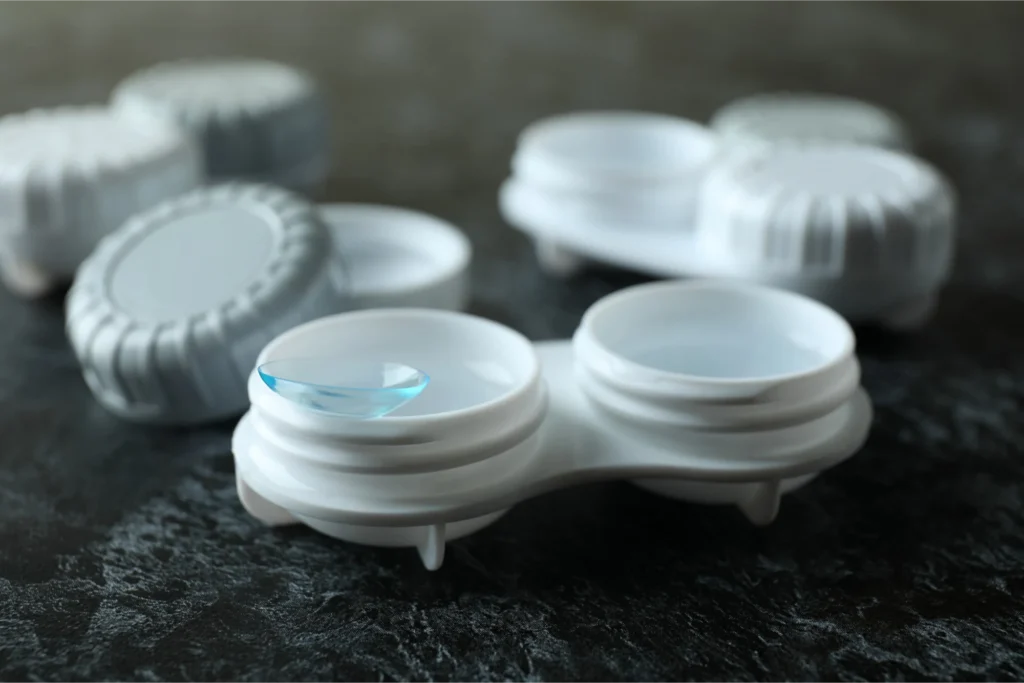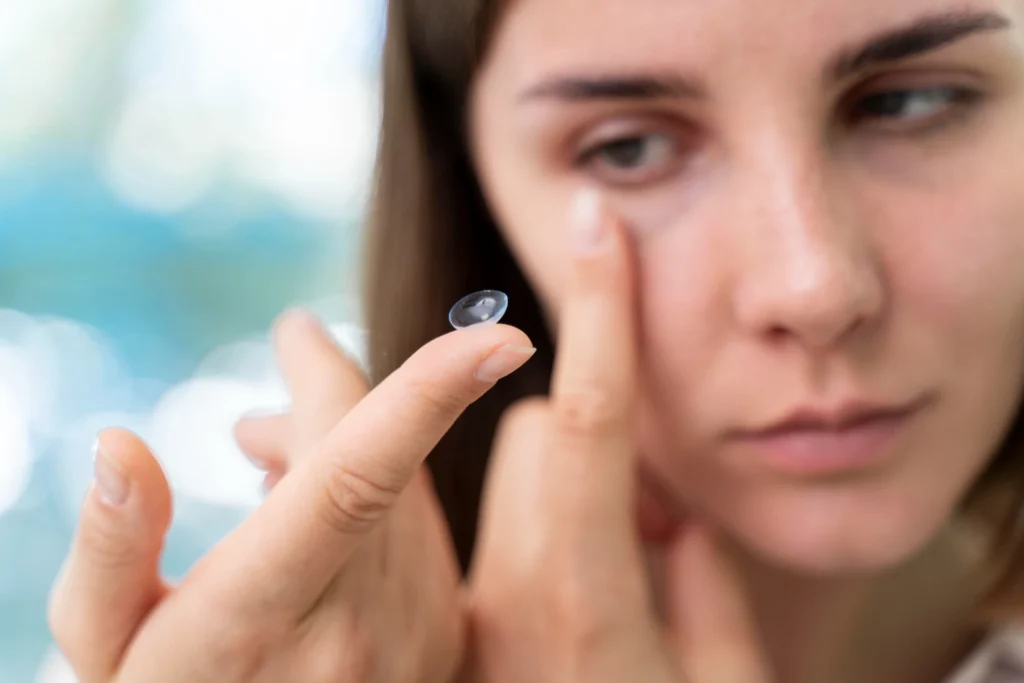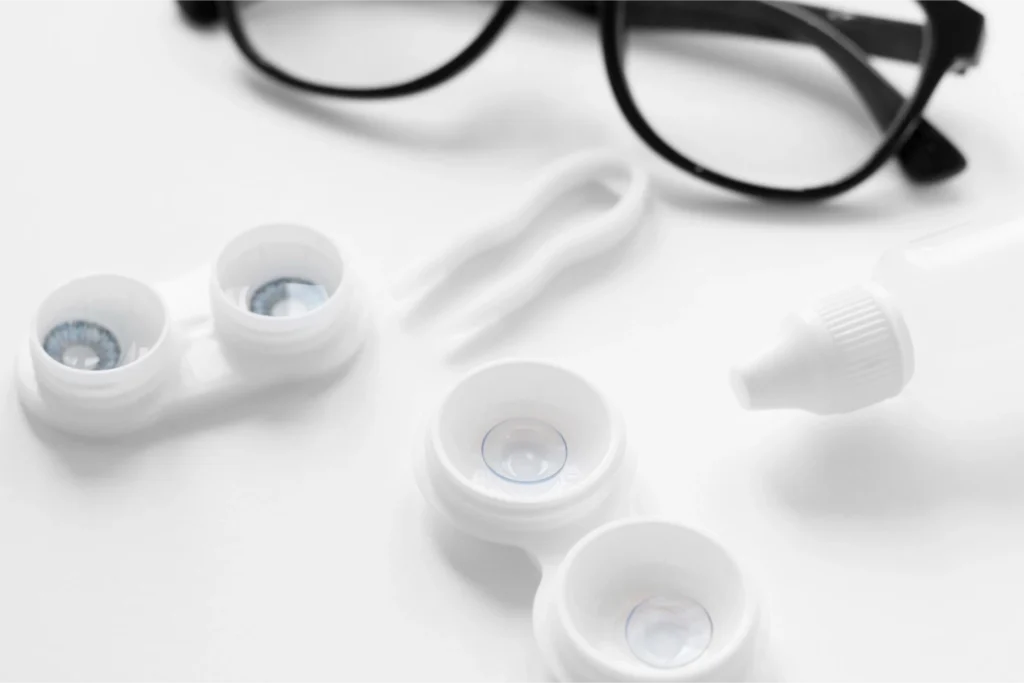Many people experience difficulty focusing on nearby objects and may not realize they’re dealing with hyperopia, also known as farsightedness. This common vision condition affects how light focuses inside the eye, leading to blurred near vision and eyestrain during close-up activities like reading or using digital devices. To ensure accurate diagnosis and the right prescription, it’s important to schedule comprehensive eye exams with your optometrist. These exams not only detect hyperopia but can also reveal other underlying eye health issues early on.
Understanding how hyperopia is corrected by which lens can help you make informed decisions about your eye health. In this article, we’ll explore what causes farsightedness, which lenses correct it, and the different treatment options available to restore clear, comfortable vision.
What Is Hyperopia (Farsightedness)?
Hyperopia, or farsightedness, occurs when nearby objects appear blurry while distant objects remain clear. This happens because light entering the eye focuses behind the retina instead of directly on it.
The condition typically develops due to:
- An eyeball that is too short from front to back
- A flatter-than-normal cornea, reducing the eye’s focusing power
Think of it like projecting an image on a screen placed too far back; the picture appears out of focus. Hyperopia can be mild or significant, depending on how far the focal point falls behind the retina.
Understanding Convex and Concave Lenses
Lenses are transparent optical tools that help redirect and focus light to form clear images. The way a lens bends light determines whether it corrects nearsightedness or farsightedness. Understanding the difference between convex and concave lenses is key to knowing which one corrects hyperopia.
Convex Lens
A convex lens, also known as a converging lens, is thicker at the center and thinner at the edges. It bends incoming light rays inward, bringing them to a single focal point on the retina. This property makes convex lenses ideal for correcting hyperopia (farsightedness), as they help refocus light that would otherwise land behind the retina.
Concave Lens
A concave lens, or diverging lens, is thinner at the center and thicker at the edges. Instead of converging light, it spreads light rays outward before they reach the eye. Concave lenses are primarily used to correct myopia (nearsightedness), helping distant objects appear clearer to the viewer.
Which Lens Corrects Hyperopia?
Hyperopia is corrected by a convex (converging) lens. These lenses are thicker at the center and thinner at the edges, helping bend incoming light rays inward so they meet exactly on the retina rather than behind it.
How Convex Lenses Improve Vision
Convex lenses enhance near vision by increasing the eye’s focusing power. When fitted into eyeglasses or contact lenses, they compensate for the shortened eyeball or flat cornea, allowing you to see nearby objects clearly and comfortably.
Convex lenses are commonly used in:
- Eyeglasses for farsightedness – everyday corrective lenses that restore reading and close-up clarity
- Contact lenses – customized convex lenses that sit directly on the cornea
- Magnifying glasses – practical, real-world examples of how convex lenses focus light
These lenses are the simplest and most effective way to manage hyperopia, providing instant improvement in vision quality and comfort.
Medical Treatment of Hyperopia
While glasses and contact lenses offer reliable vision correction, some individuals prefer more permanent options. Advances in medical technology now allow for surgical treatments that reshape or replace parts of the eye to improve focus. These procedures are especially beneficial for people with high degrees of hyperopia or those seeking long-term freedom from corrective lenses.
Laser Eye Surgeries (LASIK, PRK, LASEK)
These procedures reshape the cornea using precision lasers so that light focuses directly on the retina. Laser treatments are minimally invasive and can significantly reduce dependency on glasses.
Lens Replacement or Implants (IOLs)
In more severe or age-related cases, intraocular lens (IOL) implants can replace the eye’s natural lens to permanently correct farsightedness. This option is often recommended when hyperopia is combined with cataracts or presbyopia.
Who Is a Candidate for Surgery?
You may qualify for surgery if:
- You’re over 21 years old with stable vision
- Your eyes are healthy and free from conditions like glaucoma or corneal disease
- You seek a long-term correction alternative to lenses
Can You Prevent Hyperopia?
Hyperopia is mostly hereditary, meaning you can’t completely prevent it, but you can take steps to protect and maintain healthy vision. Proper eye care habits—like balanced nutrition, regular checkups, and mindful screen use—can help minimize eye strain and slow the progression of farsightedness. Early detection and professional guidance from an optometrist are also essential in managing and maintaining optimal eye health.
Key Takeaways:
- Schedule routine eye exams to detect changes early and ensure timely correction.
- Follow the 20-20-20 rule by looking 20 feet away every 20 minutes to reduce eye fatigue.
- Eat nutrient-rich foods like carrots, spinach, and fish for essential eye vitamins.
- Ensure proper lighting when reading or working to prevent unnecessary eye strain.
- Protect your eyes from UV rays by wearing sunglasses outdoors.
Clear Vision Starts with the Right Lens
Clear, comfortable vision begins with choosing the right corrective solution for your eyes. A convex (converging) lens brings light into proper focus on the retina, helping you see nearby objects with ease and precision. At Vision Gallery, our eye care professionals specialize in personalized vision correction from prescription glasses and contact lenses to advanced procedures like LASIK co-management, ensuring every patient receives the best possible care.
If you experience frequent eye strain or blurred near vision, book an appointment today. Our experts will help you find the ideal corrective lens or treatment plan so you can enjoy a sharper, more comfortable sight every day.
